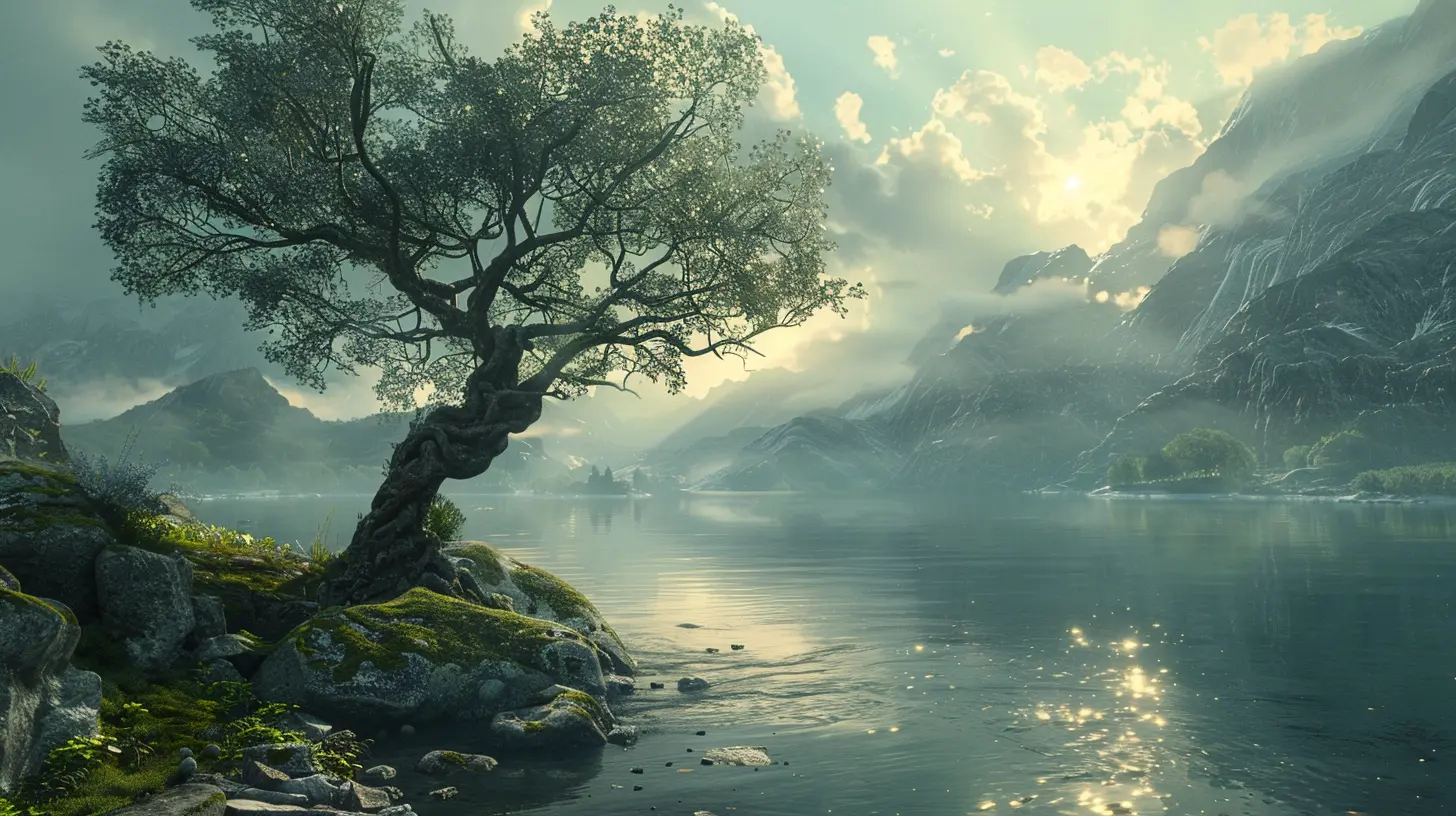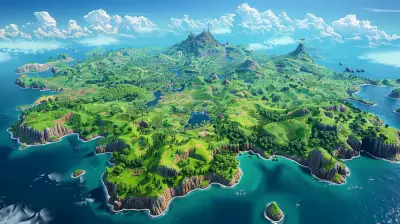Environment Design: Creating Breathtaking Landscapes in Games
26 October 2025
When was the last time you stopped mid-game just to marvel at the scenery? Maybe you stood atop a cliff overlooking a misty valley or wandered through a forest so lush, you swore you could almost smell the pine. That’s the magic of exceptional environment design! Creating breathtaking landscapes in games is an art form in itself — one that blends creativity, technical skill, and a deep understanding of how we, as humans, connect to virtual worlds.
But how do developers craft these jaw-dropping vistas? How do they make virtual landscapes feel alive, immersive, and sometimes even emotional? Let’s take a deep dive into this fascinating world of environment design. 
Why Environment Design is Crucial
Okay, let’s get real for a second. A game can have the tightest gameplay mechanics and an epic story, but if the world feels flat or uninspired, chances are the experience will fall short. Why? Because environments are more than just backdrops. They set the mood, tell stories, and invite players to explore.Think about it — would “The Legend of Zelda: Breath of the Wild” hit the same if Hyrule’s sweeping hills and mysterious ruins were uninspired? Or imagine exploring “Red Dead Redemption 2” without its cinematic sunsets and bustling towns. These environments make the game.
Good environment design creates a sense of place. It’s not just about how a world looks, but how it feels. Great landscapes immerse you so deeply that you stop thinking about the fact that you’re holding a controller or sitting at a desk. 
The Building Blocks of Stunning Landscapes
So, what goes into crafting these virtual playgrounds? Let me break it down for you.1. Conceptualization: The Birth of Ideas
Every masterpiece begins with an idea. Environment design kicks off at the conceptualization stage, where developers sketch out the vibe of their world.Concept artists dream up designs that capture the essence of the environment. Is it a lush, magical forest filled with glowing mushrooms? A post-apocalyptic wasteland riddled with ruined skyscrapers? The sky’s the limit (literally, they design the sky too!).
This stage lays the foundation for everything else. It’s where teams decide on the visual identity and “feel” they want to evoke.
> Think of it like planning a road trip: You pick your destination before figuring out how to get there.
2. The Science of Terrain Design
You know those rolling hills, jagged mountain peaks, and sprawling deserts? They don’t just randomly happen. Technique and science play a huge role.Developers use tools like height maps and terrain sculpting software to model the lay of the land. This involves shaping terrain to look natural and believable. Adding erosion patterns, realistic slopes, or geological details makes a huge difference.
And here’s a cool fun fact: Many game worlds rely on satellite data or real-world references to create accurate landscapes. So, the next time you’re trekking through a game’s snowy tundra, you might actually be seeing a digital recreation of Siberia!
3. Lighting: Setting the Mood
Have you noticed how the right lighting can make or break a vibe? Lighting in games does more than illuminate; it tells a story and evokes emotion.Warm, golden hues can make a landscape feel inviting, while cold blues and grays can create a sense of dread or mystery. Developers also play with shadows, fog, and dynamic lighting to make environments feel alive and dynamic.
Take “The Witcher 3” for example. Its dense forests during a thunderstorm give you an immediate sense of unease. Right? That’s no accident — that’s masterful lighting at work.
4. Textures and Materials: Bringing Surfaces to Life
What’s the difference between a flat, lifeless rock and one you feel tempted to touch through your screen? Textures and materials.Environment artists painstakingly apply textures to make surfaces appear real. It’s all about the tiny details: the moss on a rock, the shine of wet pavement, or the cracks in an old wooden bridge. Using high-quality materials makes a landscape believable and tactile.
And let’s not forget the importance of PBR (Physically Based Rendering). This technique simulates how light interacts with surfaces, making everything from metal to dirt look incredibly realistic.
5. Vegetation and Ecological Details
You can’t ignore the plants! Seriously, greenery (or lack thereof) is a game-changer in environment design.Forested areas need towering trees, thick undergrowth, and swaying grass. Meanwhile, deserts need cracked soil, cacti, and tumbleweeds. Developers also think about biodiversity — what animals, bugs, or even fungi might populate this world?
Games like “Horizon Zero Dawn” are perfect examples of how diverse flora and fauna breathe life into an environment. The key here is variation — no one wants to see the same tree cloned a million times.
6. Weather and Atmospheric Effects
Ever feel like weather can be a character in a game? That’s by design. Adding dynamic weather — like rainstorms, snowfall, or mist creeping across a valley — amps up immersion.Games like “Ghost of Tsushima” use wind to guide players while also making the world feel alive. Meanwhile, fog rolling through a graveyard in “Bloodborne” heightens the eerie atmosphere.
These effects aren’t just visual fluff; they add texture and emotional depth to a world. 
Storytelling Through Landscapes
Here’s where things get extra cool. Environments aren’t just about looking pretty; they’re also tools for storytelling.A ruined castle covered in vines tells you it’s been abandoned for centuries. The scorch marks on a battlefield speak of a ferocious fight. The cracked roads in a dystopian city scream of a society that collapsed long ago.
Every rock, tree, and structure in a game world has the potential to tell a story — if developers use them thoughtfully. In many cases, the environment is a form of “environmental storytelling,” letting players piece together narratives just by exploring. 
The Role of Technology
Okay, let’s geek out for a minute. The tech behind environment design has come a long way in recent years. Games today use cutting-edge tools to achieve life-like landscapes.1. Procedural Generation: Instead of manually designing every inch of a massive open world, developers use algorithms to generate terrain, forests, or even entire galaxies (looking at you, “No Man’s Sky”).
2. Ray Tracing: This tech simulates real-time light behavior, creating realistic reflections and shadows.
3. Unreal Engine 5: With tools like Nanite and Lumen, developers can create high-fidelity environments with mind-blowing levels of detail.
4. Photogrammetry: This method uses real-world photos and scans to replicate textures and objects with uncanny realism.
These technologies make it possible to create worlds that are more immersive and detailed than ever before.
Why Players Connect with Beautiful Landscapes
So, why do we love beautifully crafted game environments so much? It’s simple: Humans have an innate connection to nature and space.A well-designed game world taps into that instinct. It draws us in, sparks emotion, and inspires curiosity. Whether it's wandering through Skyrim’s snow-covered peaks or diving into the underwater city of Rapture in “Bioshock,” the scenery becomes a key part of the journey.
Final Thoughts
Environment design is more than just slapping a few trees and rocks onto a digital canvas. It’s part art, part science, and a whole lot of dedication. It’s about creating a world that players feel as much as they see.The next time you’re gaming, take a moment to appreciate the effort behind every rolling hill, every ripple in a stream, and every golden sunset. Those breathtaking landscapes? They didn’t just happen — they were lovingly crafted to make your virtual adventure unforgettable.
all images in this post were generated using AI tools
Category:
Video Game GraphicsAuthor:

Tayla Warner
Discussion
rate this article
1 comments
Korian Gill
Inspiring insights, beautifully expressed!
October 29, 2025 at 5:16 AM

Tayla Warner
Thank you so much! I'm glad you found it inspiring!


